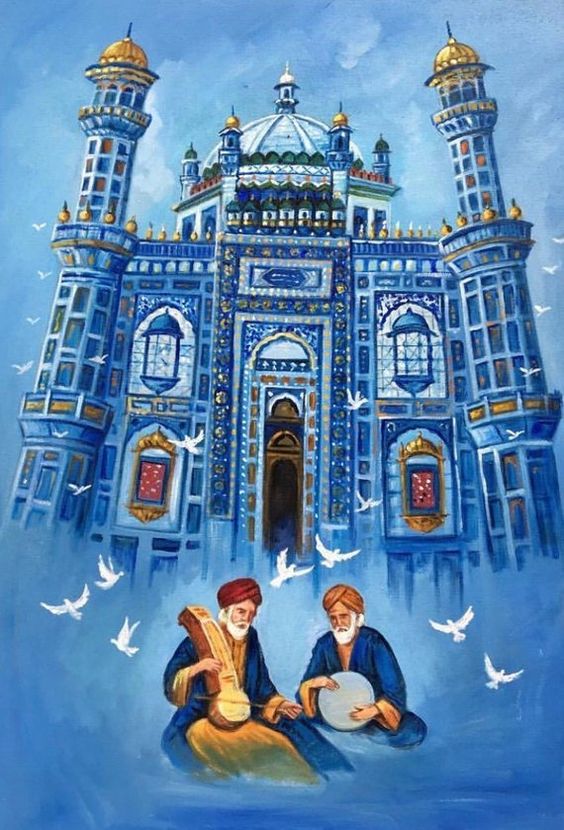
The city Bhitshah’s name is a compound of two words: ‘Bhit’ is a Sindhi word for ‘mound’ which refers to the shrine of Sufi saint Shah Abdul Latif Bhittai.
The Shrine is located in the heart of the town which is surrounded by a bustling marketplace. Interestingly, the market place beholds not just everyday utilities but a fair offering of local crafts such as clay pottery and the famous ‘Jandi’ woodwork items.
By Arif Faryal
Nearly a three hours’ drive from Karachi there is a quaint but a historical town of Bhitshah, in district Matiari, Sindh. Sindh comes from the word Sindhu which literally means ‘river’ signifying the River Indus. The land of Sindh in South Asian history is significant due to the Indus valley civilization dating back to 5000 BCE.
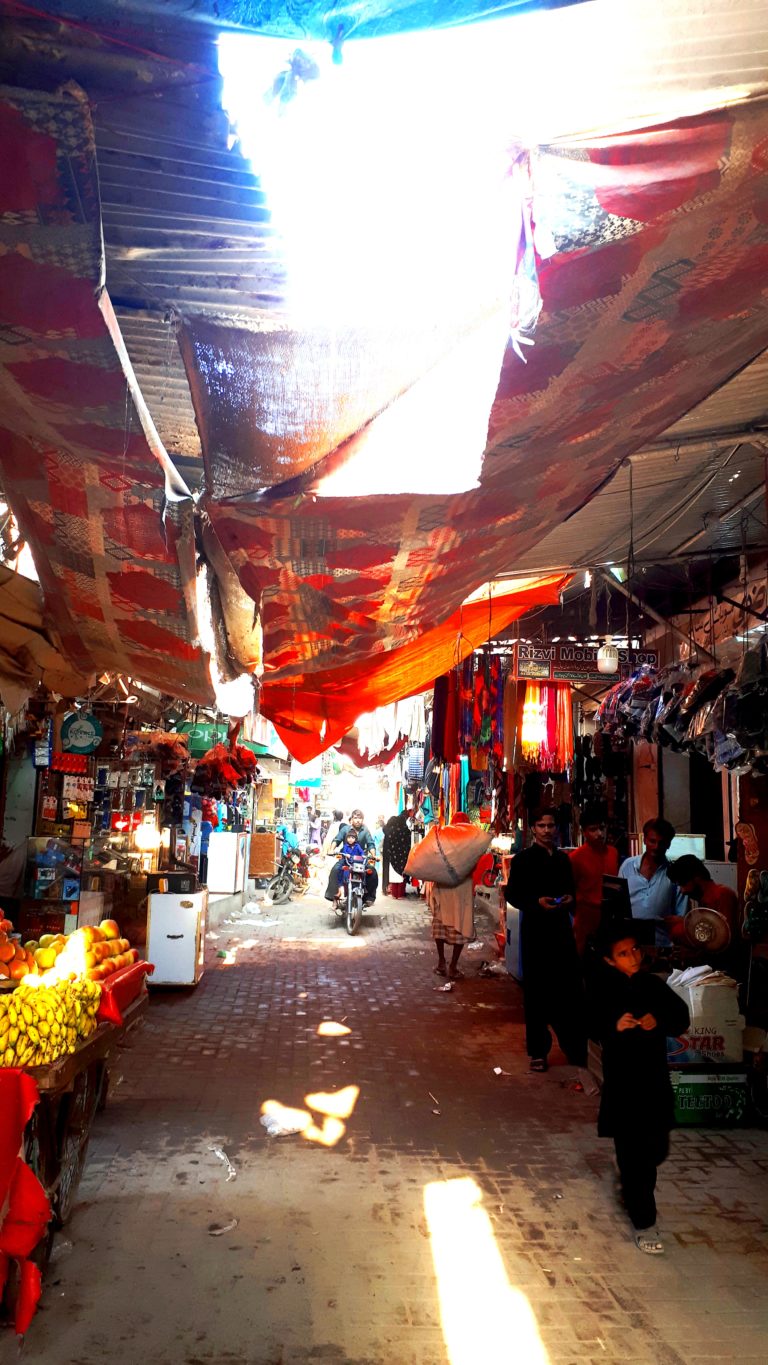
The city Bhitshah’s name is a compound of two words: ‘Bhit’ is a Sindhi word for ‘mound’ which refers to the shrine of Sufi saint Shah Abdul Latif Bhittai. The shrine was built in 1772 by a Kalhora ruler of Sindh. The Shrine is located in the heart of the town which is surrounded by a bustling marketplace. Interestingly, the market place beholds not just everyday utilities but a fair offering of local crafts such as clay pottery and the famous ‘Jandi’ woodwork items. The local bazaar also caters to the pilgrims coming to pay their regards at the Shrine of Shah Bhittai, in-fact, the many shops along the gate of the shrine sell religious souvenirs such as a bright gold & green rectangular cloth inscribed with Quranic verses as offering on the grave of the Shah Bhittai.
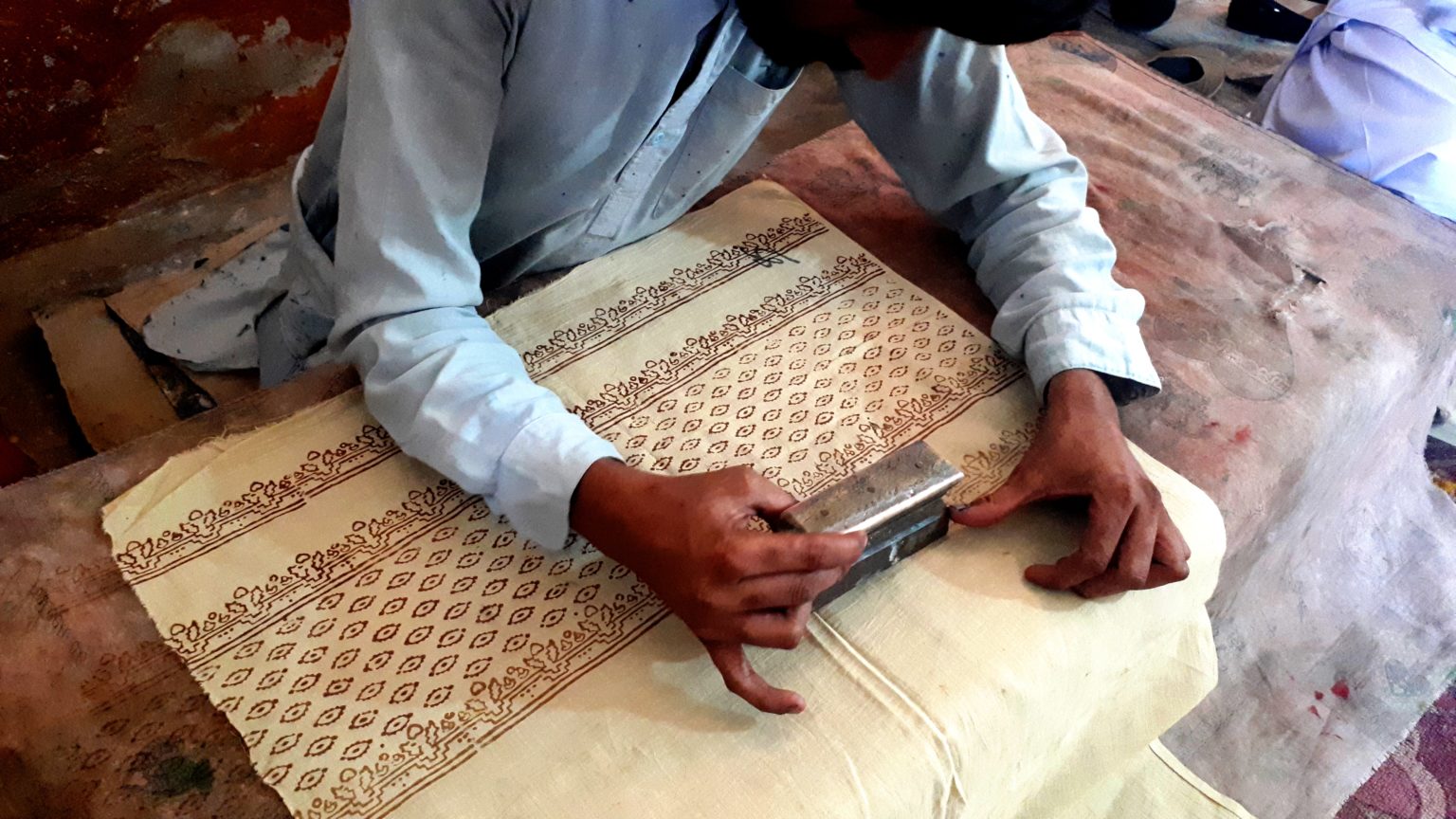
The passage to the shrine from its bustling and busy passage opens to a wide-open space typical of an Indo-Islamic building style. Upon entering one feels a sense of peace and tranquility, which the building and environment build together. The floor of the Shrine is marbled finished. The interior of the building and its compounds are decorated with colorful tiles, calligraphic and traditional floral motifs. On one side of the veranda sits a group of musicians playing Tumboro – a one-string musical instrument similar to a guitar which was invented by the Saint himself. Saint Shah Bhatti is known for his love of music and poetry through which he communicated; promoting a message of love and harmony.
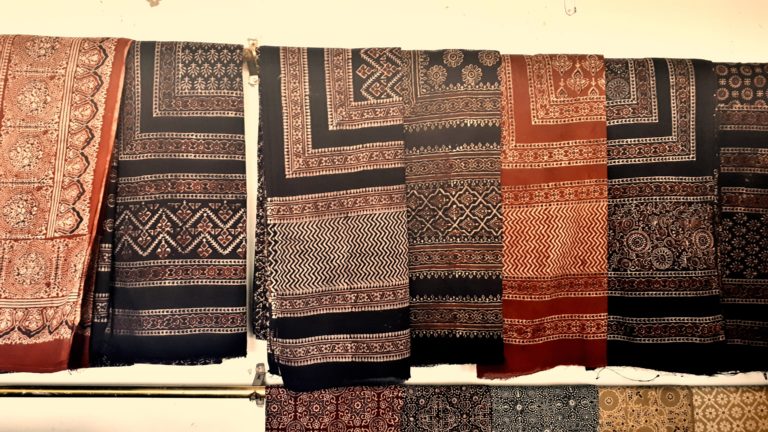
Apart from the bazaar and the shrine, Bhitshah is famous for its crafts and textiles. I visited an Ajrak printing facility, which was run by local artisan who are passionate to keep their traditions alive. Gifting Ajrak in a Sindhi culture is a symbol of respect and high stature. However, not many know about the process as one can easily purchase imitations in the market without appreciating the hard work of the artisan. Ajrak, which is an indigenous textile, has its roots back in the Indus Valley Civilization.
Perhaps you’ve come across the famous artefact from Moen-jo-Daro known as the ‘Priest’ who is adorning a wrap with patterns similar to Ajrak motifs. Ajrak also is perhaps one of the oldest techniques of textile printing which is still in practice. Ajrak is prepared in sixteen steps. The process begins with the washing of the cotton fabric. Then block printing the fabric with a mixture of clay. This creates a buffer when the fabric is later dip-dyed in indigo color (a natural plant-based color).
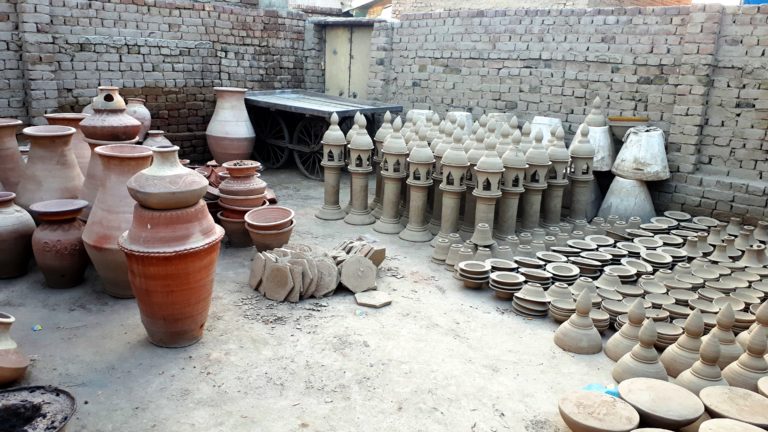
The color won’t destroy the design. The fabric is washed in hot water to meet its final form. Apart from a cultural product Ajrak is very much in vogue in local fashion. You can spot Ajrak prints on stoles, t-shirts, shoes and handbags.
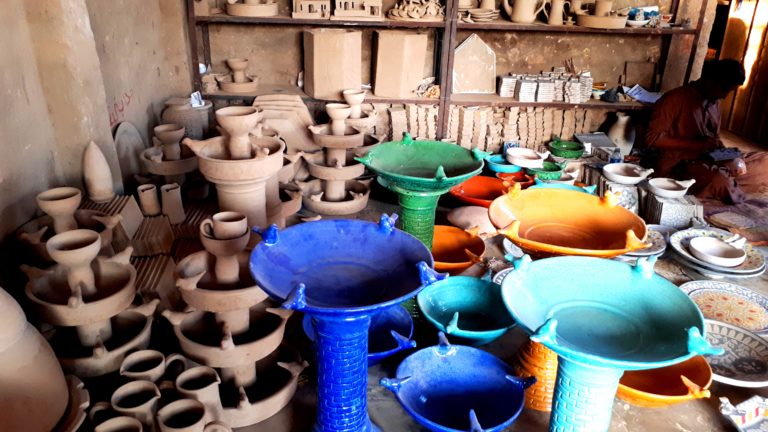
While heading back home we thought of taking a detour to another neighboring town, Hala. Hala is famous for its clay pottery and tile work. We went to a pottery workshop, where the artisans were busy creating ceramic pieces. Whilst some painting details of colorful masterstrokes like a skilled genius. The sight was mesmerizing, hundreds of ceramic pieces ready to be baked and hundreds ready for delivery to the clients. The pottery decorated with sharp colors such as red, ochre, cobalt and turquoise, were pleasing to the eye. Some pieces such as painted pigeons and elephants were perfect presents for friends.
The best time to visit Bhitshah is from mid-October to mid-March when the weather is relatively colder as most places in Sindh in summer are not less than 30 degrees.
____________________
Courtesy: Make Heritage Fun